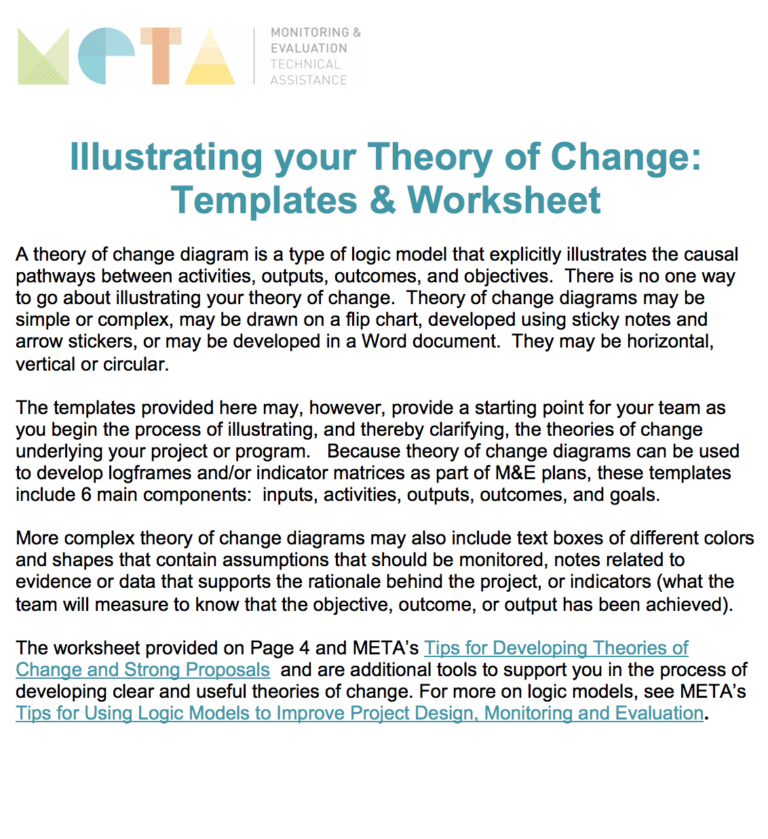A logic model is a graphic representation that defines all the building blocks required to bring about a given long-term goal. A theory of change (ToC) is a type of logic model that provides a visual representation of the change process, usually using arrows. Developing one can help your team:
- make sure that the logic underlying a program is sound;
- get on the same page about what you want to achieve, for whom, and how;
- collaboratively draw on the knowledge of staff with different roles and perspectives;
- identify and address potential risks to the program before they occur; and
- lay the foundation for the project narrative, monitoring and evaluation (M&E) plan, and budget.
This information guide provides an overview of key terms and definitions related to program design (“logic model,” “theory of change,” “logical framework (logframe),” etc.), and describes the key elements of a strong theory of change.
Want to learn more?
- See the Monitoring and Evaluation Technical Assistance (META) Project’s 8 Tips for Using Logic Models to Improve Project Design, Monitoring and Evaluation, with accompanying Case Study.
- See META’s Theory of Change and Logical Framework (Logframe) Templates.







